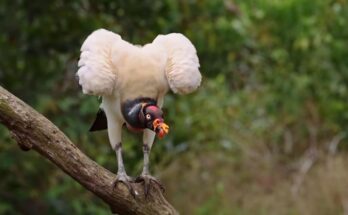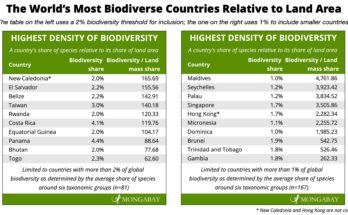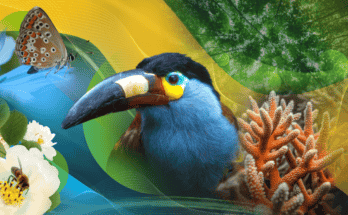Attracting wildlife to your garden can be simple and rewarding. Providing food, water, and shelter invites various creatures.
Having a garden buzzing with life adds beauty and interest to your space. Birds, butterflies, bees, and even small mammals can become regular visitors. Creating a wildlife-friendly garden helps support local ecosystems. It also offers a chance to observe nature up close.
You don’t need a large area; even small spaces can become wildlife havens. The key is to understand what different species need and provide those essentials. With a little effort, your garden can become a lively, vibrant place for both you and the wildlife. This guide will show you how to transform your garden into a wildlife paradise. Let’s dive in!
Choosing The Right Plants
Attracting wildlife to your garden can be a rewarding experience. The right plants can make all the difference. By choosing specific types of plants, you can create a haven for birds, butterflies, and other creatures. Let’s explore the best plant choices for a thriving wildlife garden.
Native Species
Native plants are the best choice for attracting wildlife. These plants have evolved in your region and are well-suited to the local climate. They require less water and care. Local wildlife recognizes these plants as a food source. Birds, insects, and animals find comfort in familiar plants.
Consider adding native grasses, shrubs, and trees. They provide shelter and nesting sites. Your local nursery can help you choose the right native species. Planting a variety of native plants can support a diverse range of wildlife.
Flowering Plants
Flowering plants are essential for a vibrant garden. They attract pollinators like bees, butterflies, and hummingbirds. Choose plants with different bloom times. This ensures a steady supply of nectar throughout the year.
Bright, colorful flowers are especially attractive to pollinators. Sunflowers, coneflowers, and lavender are great options. Group similar plants together. This creates a larger target for pollinators. Avoid using pesticides. They can harm the very wildlife you want to attract.
Providing Water Sources
Providing water sources is crucial to attracting wildlife to your garden. Water is essential for drinking, bathing, and even breeding. By adding water features, you can create a welcoming environment for various creatures.
Bird Baths
Bird baths are a simple way to attract birds. Place them in a visible spot. Birds need to see the water from their perches. Ensure the bath is shallow. Birds prefer water that’s no deeper than 2 inches. Refill and clean the bird bath regularly. Dirty water can spread diseases.
Ponds
Ponds can attract a wide range of wildlife. Frogs, insects, and even small mammals may visit. Add plants around and in the pond. Plants provide shelter and breeding sites. Ensure the pond has shallow edges. This allows animals to enter and exit safely. Avoid using chemicals in the pond water. Chemicals can harm wildlife.
Creating Shelter
Creating shelter is essential to attract wildlife to your garden. Animals need places to hide from predators, rest, and raise their young. By providing various types of shelter, you can make your garden a haven for wildlife.
Nest Boxes
Nest boxes are great for attracting birds. Different species need different sizes of nest boxes. Make sure to place them in quiet areas. Avoid spots that are too exposed to the sun. Secure them to trees or walls at a suitable height. Regularly clean nest boxes to prevent parasites.
| Bird Species | Box Size | Height |
|---|---|---|
| Bluebirds | 5 x 5 inches | 4-6 feet |
| Robins | 6 x 6 inches | 6-10 feet |
| Sparrows | 4 x 4 inches | 3-10 feet |
Hedge Rows
Hedge rows offer a natural shelter for many creatures. They provide cover and nesting sites. Dense hedges attract birds, insects, and small mammals. Consider planting native shrubs and trees. This ensures that the local wildlife is familiar with the plants.
- Hawthorn
- Holly
- Blackthorn
- Field Maple
Maintain the hedges by trimming them. This keeps them dense and healthy. Avoid cutting during the breeding season. This prevents disturbing nesting animals. Hedge rows also act as corridors for wildlife. They allow safe passage between different areas of your garden.

Feeding Wildlife
Feeding wildlife is a great way to attract various animals to your garden. By providing food, you create a welcoming environment for birds, butterflies, and other creatures. Below are some effective ways to feed wildlife in your garden.
Bird Feeders
Bird feeders are essential for attracting a variety of birds to your garden. They come in different shapes and sizes, catering to different bird species.
- Tube feeders: Ideal for small birds like finches and sparrows.
- Hopper feeders: Suitable for larger birds such as cardinals and jays.
- Suet feeders: Great for woodpeckers and nuthatches.
Place bird feeders in a quiet area. Ensure they are safe from predators. Refill feeders regularly to keep birds coming back.
Nectar Plants
Nectar plants attract butterflies, bees, and hummingbirds. These plants provide a natural food source for these pollinators.
| Plant | Attracts |
|---|---|
| Bee Balm | Bees and Hummingbirds |
| Milkweed | Butterflies |
| Salvia | Bees and Butterflies |
Plant nectar plants in sunny spots. Choose a variety to ensure blooms throughout the season. This helps maintain a steady food supply.
By following these tips, you can attract a diverse range of wildlife to your garden. Happy wildlife watching!
Avoiding Pesticides
Attracting wildlife to your garden can make it a vibrant, lively space. One key aspect to achieve this is by avoiding pesticides. Pesticides can harm the very creatures you want to attract. Birds, bees, and beneficial insects are sensitive to chemicals. Let’s explore some alternatives to keep your garden safe and thriving.
Organic Alternatives
Using organic alternatives can keep pests at bay while protecting wildlife. Here are some options:
- Neem oil: This natural oil repels many pests. It’s safe for bees and birds.
- Soap sprays: A simple mix of soap and water can control aphids and mites.
- Diatomaceous earth: This powder is made from fossilized algae. It can deter insects without harming larger animals.
These methods are effective and eco-friendly. They keep your garden safe for all its inhabitants.
Beneficial Insects
Encouraging beneficial insects can naturally control pests. These insects prey on harmful bugs and keep the ecosystem balanced. Some examples are:
| Beneficial Insect | Common Prey |
|---|---|
| Ladybugs | Aphids |
| Lacewings | Whiteflies |
| Praying Mantises | Various harmful insects |
To attract these insects, plant a variety of flowers and herbs. Diversity in plants provides food and shelter for beneficial insects. This creates a balanced ecosystem where wildlife can thrive.

Adding Diverse Habitats
Creating a garden that attracts wildlife can be fulfilling. It involves adding diverse habitats. By introducing various natural elements, you can provide food, shelter, and nesting sites for different species. Diverse habitats create a balanced ecosystem. This will invite birds, insects, and small mammals to your garden.
Rock Piles
Rock piles offer shelter for many creatures. Lizards, frogs, and insects find refuge here. You can create rock piles by stacking stones of different sizes. Make sure to leave gaps between the stones. These gaps serve as hiding spots. Rock piles also help in maintaining soil moisture. This benefits plants and attracts worms and other soil dwellers.
Log Piles
Log piles are another great addition. They provide homes for various insects, such as beetles and centipedes. Birds and small mammals may also use log piles for nesting. To create a log pile, gather old logs or branches. Arrange them in a stack. Leave some space between logs for creatures to move in. As the logs decay, they enrich the soil. This promotes plant growth and attracts more wildlife.
Encouraging Pollinators
Encouraging pollinators in your garden can bring it to life. Pollinators like bees and butterflies help plants grow. They spread pollen from flower to flower. This action helps plants make seeds. These seeds grow into new plants. By welcoming pollinators, you help your garden thrive.
Bee Hotels
Bee hotels give bees a place to rest. These small structures mimic natural habitats. You can make one or buy it. Place it in a sunny spot. Ensure it stays dry. Bees will use it to lay eggs. This action increases their numbers. More bees mean better pollination for your plants.
Butterfly Gardens
Butterfly gardens attract beautiful winged visitors. Plant flowers that butterflies love. Choose native plants. They are more attractive to local butterflies. Include milkweed for monarch butterflies. Also, provide a shallow water source. Butterflies need water to stay hydrated. Create sunny spots for them to warm up. They love basking in the sun.
Maintaining A Healthy Ecosystem
Attracting wildlife to your garden involves more than just adding a bird feeder or planting native flowers. Maintaining a healthy ecosystem is crucial. This ensures the long-term sustainability of your garden and supports various wildlife species. Here are some essential practices to help you create and maintain a healthy ecosystem in your garden.
Composting
Composting is a great way to recycle organic waste from your kitchen and garden. It enriches the soil, making it more fertile and better able to support plant growth. Healthy plants, in turn, attract a variety of wildlife.
Here’s how you can start composting:
- Collect organic waste such as fruit peels, vegetable scraps, and grass clippings.
- Layer the collected waste with dry leaves or newspaper to balance moisture.
- Turn the compost pile every few weeks to aerate it.
- After a few months, the compost will be ready to use.
Soil Health
Soil health is the foundation of a thriving garden. Healthy soil supports plant growth, which in turn attracts wildlife. Regularly check the pH level of your soil and add amendments as needed to maintain its balance.
Consider these tips for maintaining soil health:
- Use organic fertilizers instead of chemical ones.
- Plant a variety of plants to promote biodiversity.
- Rotate crops to prevent soil depletion.
- Mulch to retain moisture and reduce weeds.
Healthy soil not only supports robust plant growth but also fosters a habitat for beneficial insects and microorganisms.
| Practice | Benefits |
|---|---|
| Composting | Enriches soil, reduces waste |
| Soil Health | Supports plant growth, attracts wildlife |

Frequently Asked Questions
How Do I Attract Birds To My Garden?
Provide fresh water, food sources like seeds and fruits, and shelter. Plant native shrubs and trees.
What Flowers Attract Butterflies?
Plant nectar-rich flowers such as milkweed, lavender, and marigolds. These flowers attract butterflies effectively.
How Can I Attract Bees To My Garden?
Include a variety of flowering plants. Avoid using pesticides. Bees love flowers like lavender and sunflowers.
What Plants Attract Hedgehogs?
Plant dense shrubs and create log piles. Offer food like cat food, and ensure water availability.
Conclusion
Creating a wildlife-friendly garden is truly rewarding. It supports nature and adds life to your space. Plant native species. Provide water sources. Offer shelter. Use eco-friendly practices. These steps attract birds, bees, and more. Enjoy the beauty and activity they bring.
A thriving garden benefits both you and the environment. Start small. Watch your garden transform into a wildlife haven. Every little effort counts. Happy gardening!



